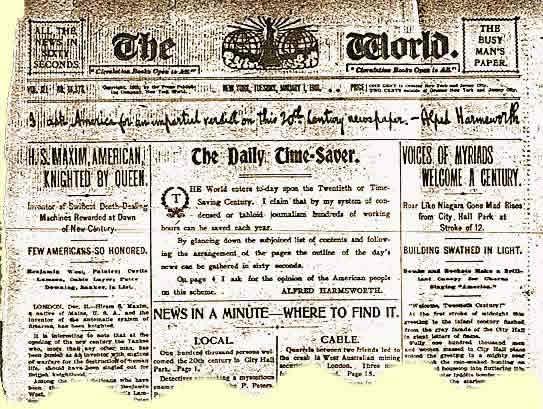
Harmsworth’s Daily Timesaver, 1901: A transatlantic case study in the tabloidisation of reader time
Abstract
The topic of the thesis is the production of arguably the world’s first tabloid newspaper, on New Year’s Day, 1901, after New York World proprietor Joseph W Pulitzer invited his British counterpart Alfred Harmsworth to guest edit the World as a stunt. Harmsworth, renowned for his launch of the London Daily Mail, in 1896, nick-named his special World edition the Daily Timesaver and said it was the newspaper of the future. He claimed it was based on a “condensed or tabloid” system of journalism which could save the reader hundreds of hours each year. An eye-witness described the production as “an epoch-making international episode in the history of journalism.”
This thesis makes an original contribution to the field of journalism history in two ways. Firstly it establishes and tests the hypothesis that Alfred Harmsworth’s prototype tabloid Timesaver in 1901 was an experiment in testing the limits of how the newspaper reading experience could be manipulated to suit production imperatives. Secondly, it demonstrates the potential of looking afresh at tabloids with a conceptual approach that prioritises the centrality of the temporal in the changing relationships between producer and audience.
This approach is particularly significant for the study of tabloids, given that it eschews a more traditional starting point of normative concerns measured against public sphere criteria. But it could be usefully applied to understand other instances – in broadcasting and new media, for example – where untested claims are made about the form of journalism being demand-led. This conceptual approach invites a holistic methodology to capture the details of the production process for analysis and, in this case, it is informed by a lengthy examination of office correspondence in the Pulitzer Papers at Columbia University.
It concludes that the Timesaver was an experiment in persuading readers to consume news in a way that was in the best interests not of themselves but of the producer. But that there was a twist in the tail, in that it was resisted by those with an affection for more discursive forms of news in the face of apparently irresistible industrialisation and corporatisation of newspapers.